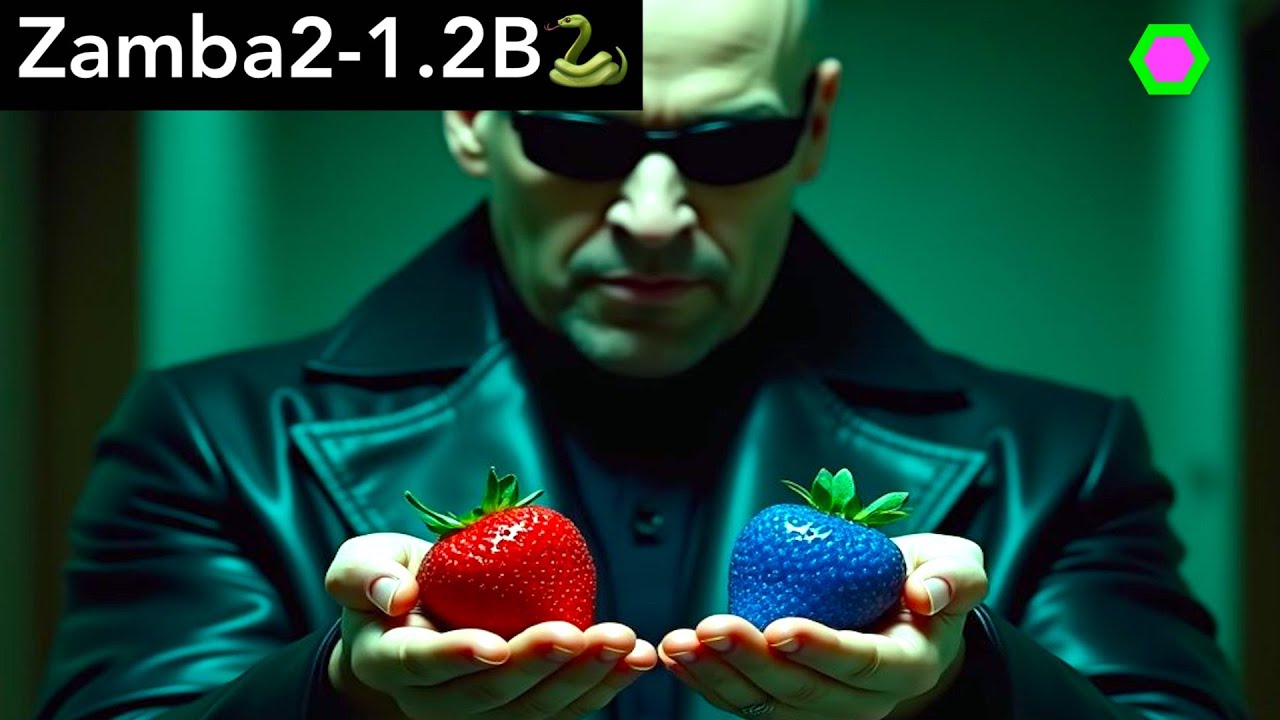The video introduces Zamba 1.2B, a new language model developed by Zyra that focuses on delivering state-of-the-art performance for on-device applications, achieving a superior performance-to-speed ratio compared to other small models like Gemma 2B. It highlights the model’s efficient architecture and pre-training on 3 trillion tokens, positioning Zamba 1.2B as a leading option for mobile computation while emphasizing the importance of collaboration and transparency in the AI community.
The video discusses the emergence of a new language model called Zamba 1.2B, developed by a startup named Zyra based in the Bay Area. Unlike many existing models that focus on maximizing performance and size, Zamba 1.2B aims to deliver state-of-the-art capabilities specifically for on-device applications. The presenter highlights the importance of this focus, as it addresses the growing need for efficient models that can operate effectively on mobile devices, contrasting with the trend of relying on server-based APIs.
Zyra emphasizes the quality versus inference speed of their model, which is particularly relevant for mobile applications. The video presents a graph demonstrating that Zamba 1.2B achieves a superior performance-to-speed ratio compared to other small models, such as Gemma 2B and DanU 1.7B. This is significant because it showcases the model’s ability to provide a good user experience without the need for extensive server resources, thus supporting the trend of on-device computation.
The construction of Zamba 1.2B involved pre-training on approximately 3 trillion tokens, yielding around 100 billion high-quality tokens. The video explains how Zyra has managed to create a smaller yet highly capable model, drawing comparisons to other models like Llama 3. The presenter notes that Zamba 1.2B has been released on platforms like Hugging Face and PyTorch, positioning it as a leading option among small language models across various benchmarks.
The video also highlights the architectural differences between Zamba 1.2B and Gemma 2B, as explained by Quenton Anthony, an engineer who worked on Gemma. Key differences include the use of rotary position embeddings, a single shared Transformer block, and the integration of Laura projectors into attention blocks. These architectural choices allow Zamba to perform better in parallel processing, which is crucial for mobile GPU compute and enhances its overall efficiency.
Finally, the presenter praises Zyra for its focused approach to developing advanced AI systems while maintaining transparency and openness. The video concludes by encouraging viewers to explore Zamba 1.2B and its potential applications, as well as to stay tuned for future content covering other innovative AI startups. The emphasis on collaboration and knowledge sharing among engineers from different companies is highlighted as a positive trend in the AI community.
